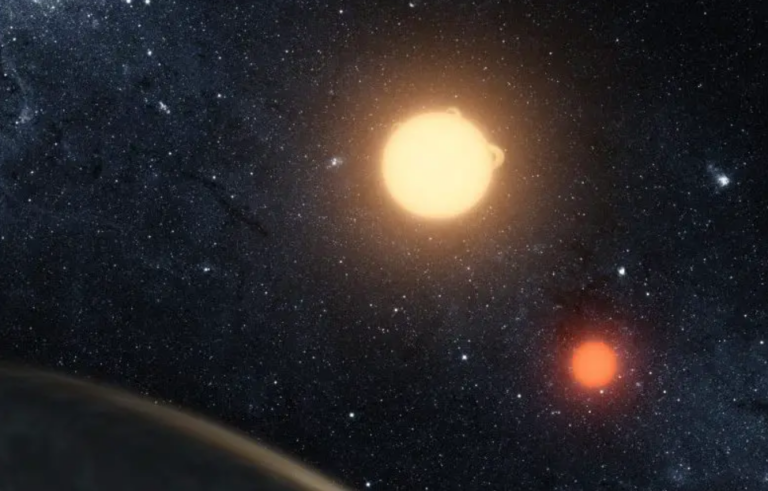Astronomers have found a star of such immense size that it is creating a miniature star system around itself instead of planets.
Astronomers could not believe that the massive disk around the youthful MM 1a star was not forming planets but another star. This newly discovered companion, which has been named MM 1b, was found to be situated slightly beyond the dust ring existing around the massive star and could itself have its own circumstellar disk. The discovery that was published in the journal called Astrophysical Journal Letters presents the phenomenon, which is quite rare, where a star is born right near a disk and in fact within the fragments of the disk.
Stellar Siblings
Binary stars are quite famous in the universe while the formation of stars is said to have happened from the large cloud of gas and dust that through the hold of gravity formed stars including single stars. If a molecular cloud is massive enough, then it is possible that instead of resulting in the formation of a single star, it will result in the birth of two stars that are of comparable size.
Furthermore, the discovery of MM 1a was quite surprising since the astronomers at the University of Leeds did not expect MM 1a to be that difficult to detect since it is in a binary system. In an attempt to deny the existence of multiple stars, they concentrated on what seemed to be one star and discovered a second star, less bright and much smaller, within the outer layer of the star’s disk — the location where planets are formed.
John Ilee from the University of Leeds, who led the study said in a press release: “In this case, the star and disk we see are so enormous that instead of seeing a planet form within the disk, what we are seeing is star birth.

The researchers used the Atacama Large Millimetre/submillimetre Array (ALMA) to study the peculiar pair, examining the wavelengths of light emitted by the gas in the disk, and the radiation coming from the dust in the disk. With this data, they were able to calculate the mass of the stars. MM 1a was estimated to be 40 times the mass of our Sun while MM 1b was estimated to be half the mass of MM 1a.
To explain this big difference, the researchers argue that MM 1b was created from a fragment of the disk of MM 1a. They propose that the large mass of the disk forced it to fragment through its own gravitational force. One of these fragments, containing enough gas and dust, may have also contained a disk which could form a planet.
Unfortunately, both stars and any potential planets are doomed to die in the near future. Stars like MM 1a have a short lifetime, and in approximately a million years, a supernova may well be the demise of the entire system. On the other hand, stars with low masses such as MM 1b take longer to burn out.
Nevertheless, this finding is one of the exceptional instances that witnessed astronomers identifying a star rising from the debris of a companion’s disk. This discovery may help researchers to study other peculiar stellar configurations in the universe and acknowledge the fact that a lot still remains unknown about stars.
Do not forget to share your opinion with us to provide you with the best posts !




0 Comments